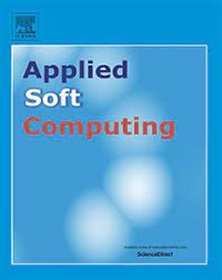AdvGrid: A multi-view black-box attack on infrared pedestrian detectors in the physical world
IF 7.2
1区 计算机科学
Q1 COMPUTER SCIENCE, ARTIFICIAL INTELLIGENCE
引用次数: 0
Abstract
Physical adversarial attacks in the visible spectrum have been extensively studied, but research on infrared attacks remains limited. Infrared pedestrian detectors are crucial for modern applications yet vulnerable to adversarial attacks, posing significant security risks. Existing methods using physical perturbations like light bulb arrays or hot/cold patches for black-box attacks have shown limitations in practicality and multi-view support. To address these challenges, we introduce Adversarial Infrared Grid (AdvGrid), a novel approach that models perturbations in a grid format and employs a genetic algorithm for black-box optimization. AdvGrid cyclically applies perturbations to various parts of a pedestrian’s clothing, enabling effective multi-view black-box attacks on infrared detectors. Our extensive experiments demonstrate AdvGrid’s superior performance: Effectiveness: Achieves 80.00% attack success rate in digital environments and 91.86% in physical environments. Stealthiness: Maintains high stealthiness, making it difficult for observers to identify the adversarial patterns. Robustness: Exceeds 50% average attack success rate against mainstream detectors, showcasing its robustness across different scenarios. We also conduct ablation studies, transfer attacks, and adversarial defense evaluations, further confirming AdvGrid’s superiority over baseline methods. Our findings highlight AdvGrid as a powerful tool for advancing the understanding and mitigation of adversarial threats in infrared detection systems.
求助全文
约1分钟内获得全文
求助全文
来源期刊

Applied Soft Computing
工程技术-计算机:跨学科应用
CiteScore
15.80
自引率
6.90%
发文量
874
审稿时长
10.9 months
期刊介绍:
Applied Soft Computing is an international journal promoting an integrated view of soft computing to solve real life problems.The focus is to publish the highest quality research in application and convergence of the areas of Fuzzy Logic, Neural Networks, Evolutionary Computing, Rough Sets and other similar techniques to address real world complexities.
Applied Soft Computing is a rolling publication: articles are published as soon as the editor-in-chief has accepted them. Therefore, the web site will continuously be updated with new articles and the publication time will be short.
 求助内容:
求助内容: 应助结果提醒方式:
应助结果提醒方式:


